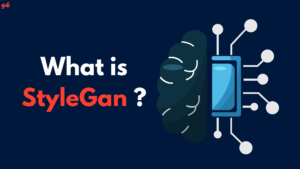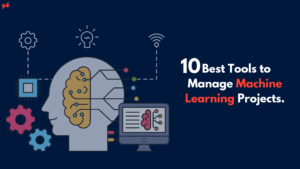Language is a remarkable and intricate aspect of human communication. Over the years, advancements in technology have made it possible for machines to understand and process human language. Natural Language Processing (NLP) is the branch of artificial intelligence that focuses on enabling computers to understand, interpret, and generate human language. In this article, we will explore the top 15 Natural Language Programming Libraries that have revolutionized the field of NLP, empowering developers and researchers to harness the power of language processing.
Natural Language Programming Libraries: An Overview
Natural Language Programming Libraries provide a wealth of tools, algorithms, and resources to developers and researchers, making it easier to process, analyze, and understand human language. These libraries encompass a wide range of functionalities, including text classification, named entity recognition, sentiment analysis, machine translation, and more. Let’s dive into the top 15 Natural Language Programming Libraries and explore their unique features and capabilities.
SpaCy: The Powerhouse of NLP
SpaCy is a widely acclaimed open-source NLP library that offers robust capabilities for natural language understanding. With its efficient and streamlined design, SpaCy provides fast and accurate linguistic annotations, entity recognition, and syntactic parsing. It supports multiple languages, making it a versatile choice for developers around the world.
NLTK: The Natural Language Toolkit
NLTK, short for Natural Language Toolkit, is a comprehensive library for NLP in Python. It provides a vast collection of text-processing libraries and corpora, making it an excellent resource for tasks such as tokenization, stemming, lemmatization, and parsing. NLTK also offers various algorithms for classification, language modeling, and information retrieval.
Gensim: Topic Modeling and Document Similarity
Gensim is a popular library that specializes in topic modeling and document similarity analysis. It provides efficient implementations of algorithms such as Latent Dirichlet Allocation (LDA) and Latent Semantic Analysis (LSA). Gensim is widely used for tasks like document clustering, topic extraction, and information retrieval.
Stanford NLP: State-of-the-Art Language Analysis
Stanford NLP is a suite of natural language processing tools developed by the Stanford University Natural Language Processing Group. It offers a wide range of capabilities, including part-of-speech tagging, named entity recognition, sentiment analysis, and dependency parsing. Stanford NLP is known for its high accuracy and state-of-the-art performance.
CoreNLP: Multilingual NLP in Java
CoreNLP, developed by Stanford University, is a powerful library for multilingual natural language processing. It provides a wide range of annotations and linguistic analysis, including coreference resolution, sentiment analysis, and relation extraction. CoreNLP is implemented in Java and offers robust support for various languages.
FastText: Efficient Text Classification
FastText, developed by Facebook AI Research, is a library specifically designed for efficient text classification. It utilizes word embeddings and utilizes a fast and scalable algorithm for training supervised models. FastText is known for its ability to handle large volumes of text data and has been widely adopted in industry applications.
AllenNLP: Deep Learning for NLP
AllenNLP is a library built on top of PyTorch, focusing on deep learning techniques for natural language processing tasks. It provides a modular and extensible framework for developing state-of-the-art models in areas like text classification, named entity recognition, and semantic role labeling. AllenNLP empowers researchers to experiment with cutting-edge deep learning architectures.
BERT: Pretrained Transformer Models
BERT, which stands for Bidirectional Encoder Representations from Transformers, is a revolutionary language representation model developed by Google. It has transformed the field of NLP with its ability to capture contextual word embeddings. BERT models have achieved remarkable results in various tasks such as question answering, text classification, and text generation.
Word2Vec: Word Embeddings Made Easy
Word2Vec is a popular library for generating word embeddings, which are dense vector representations of words. It captures semantic and syntactic relationships between words, enabling algorithms to understand similarities and analogies. Word2Vec has become a fundamental component of many NLP applications, including information retrieval, sentiment analysis, and machine translation.
Flair: Contextual String Embeddings
Flair is a library that focuses on contextual string embeddings, which capture both word-level and document-level context. It provides pre-trained models for tasks like named entity recognition, part-of-speech tagging, and sentiment analysis. Flair is known for its ability to handle out-of-vocabulary words and its seamless integration with other NLP frameworks.
PyTorch-NLP: NLP with PyTorch
PyTorch-NLP is a library that leverages the PyTorch deep learning framework for natural language processing tasks. It offers a range of utilities and pre-trained models for tasks like text classification, sequence tagging, and machine translation. PyTorch-NLP provides a flexible and intuitive interface for building and training NLP models.
Transformers: State-of-the-Art Models
Transformers is a library developed by Hugging Face that provides access to a wide range of state-of-the-art transformer models. These models, such as GPT, BERT, and T5, have achieved groundbreaking results in various NLP tasks. Transformers simplifies the process of using these models, allowing developers to leverage their power for their own applications.
TextBlob: Simplified NLP for Python
TextBlob is a user-friendly library that simplifies common NLP tasks in Python. It provides a high-level API built on top of NLTK and Pattern libraries, making it easy to perform tasks like sentiment analysis, part-of-speech tagging, noun phrase extraction, and more. TextBlob is an excellent choice for beginners and for quickly prototyping NLP applications.
OpenNLP: Scalable and Customizable NLP
OpenNLP is a Java-based library that offers a range of natural language processing capabilities. It provides tools for tokenization, sentence detection, part-of-speech tagging, chunking, named entity recognition, and more. OpenNLP is highly customizable and allows developers to train their own models for specific domains or languages.
Conclusion
In conclusion, the field of Natural Language Processing has seen tremendous advancements in recent years, thanks to the top 15 Natural Language Programming Libraries discussed in this article. These libraries have empowered developers and researchers to explore the depths of human language, enabling applications such as chatbots, sentiment analysis, machine translation, and information retrieval. From the powerhouse of SpaCy to the cutting-edge models of BERT and Transformers, these libraries offer a rich set of tools and algorithms for NLP tasks. By leveraging these libraries, developers can unlock the power of language processing and create intelligent applications that understand and interact with human language.




